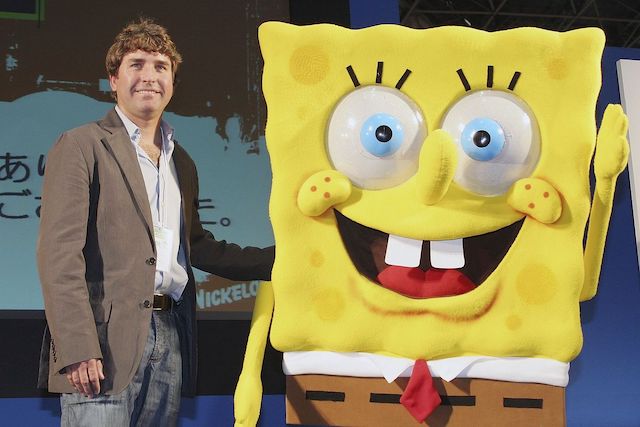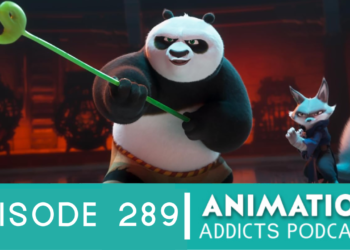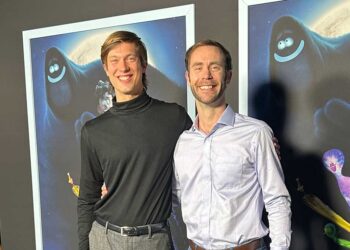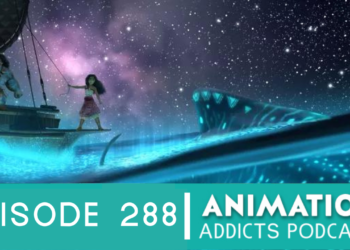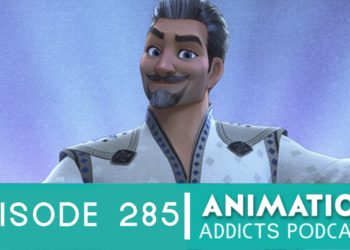It is with the sad grievance that we say goodbye to Stephen Hillenburg, the man who created Nickelodeon’s most legendary television series SpongeBob SquarePants. Hillenburg tragically passed away at the age of 57 after battling with amyotrophic lateral sclerosis (ALS), an incurable muscle-deteriorating disease which he got diagnosed with in March of last year.
In a statement regarding Hillenburg’s passing via Variety, Nickelodeon said:
“We are incredibly saddened by the news that Steve Hillenburg has passed away following a battle with ALS. He was a beloved friend and long-time creative partner to everyone at Nickelodeon, and our hearts go out to his entire family. Steve imbued ‘SpongeBob SquarePants’ with a unique sense of humor and innocence that has brought joy to generations of kids and families everywhere. His utterly original characters and the world of Bikini Bottom will long stand as a reminder of the value of optimism, friendship and the limitless power of imagination.”
Born in Lawton, Oklahoma on August 21, 1961, Stephen McDannell Hillenburg grew up with a passion for drawing and a fascination on marine life. His love towards the latter convinced him to study marine biology at the Humboldt State University in Arcata, California, graduating in 1984 with a natural-resource planning bachelor. From there, Hillenburg went through various jobs such as a park service attendant, before landing his dream job as a marine science teacher at Orange County Marine (now called Ocean Institute).
Combining his teaching knowledge and artistic abilities, Hillenburg created an educational comic titled The Intertidal Zone to teach his young students, which featured anthropomorphic sea creatures including the comic’s co-host “Bob the Sponge”. Later on, he began to attend numerous animation festivals which sparked his fascination with the artistic film medium and convinced him to become an animator himself. He quit his teaching job in 1987 to study animation and signed up for the Experimental Animation Program at CalArts two years later.
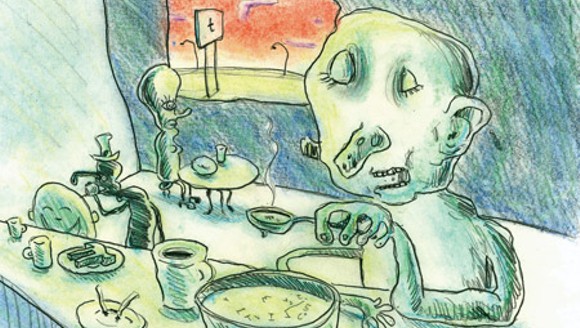
[Stephen Hillenburg]
Hillenburg later landed his first professional animation job at Nickelodeon as a director on the show Rocko’s Modern Life. He and the show’s creator Joe Murray met at Ottawa International Animation Festival in 1992 where Hillenburg’s Wormholes and Murray’s My Dog Zero were screening. After being impressed with Hillenburg’s work, Murray offered him the directing gig. Hillenburg worked closely with Murray throughout the show’s four seasons, serving for directing, writing, and producing some episodes.
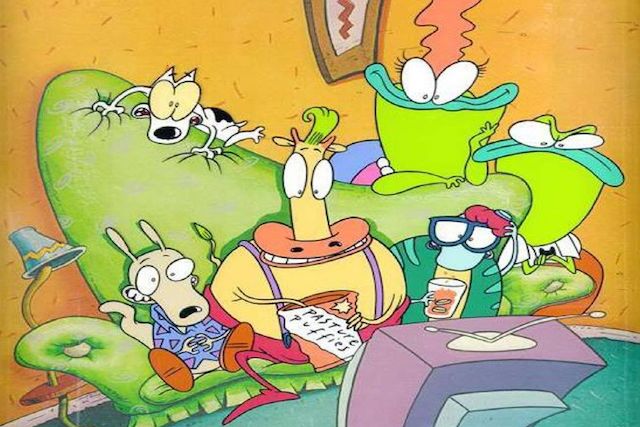
[Nickelodeon]
“For all those years it seemed like I was doing these two totally separate things. I wondered what it all meant. I didn’t see a synthesis. It was great when [my two interests] all came together in [a show]. I felt relieved that I hadn’t wasted a lot of time doing something that I then abandoned to do something else. It has been pretty rewarding,”
However, his commitment to creating a show sparked up during a beach visit along the Santa Monica Freeway. He began to build his ideas based on his past teachings of marine biology and memorized how his students were fascinated with tide-pool creatures. Combining this, along with elements of The Intertidal Zone, and his past job experience as a fry cook, the final component was to choose the weirdest sea creature to use as the main character. Via The New York Times, he decided: “I wanted to do a show about a character that was an innocent, and so I focused on a sea sponge because it’s a funny animal, a strange one.” And thus, SpongeBob SquarePants was born.
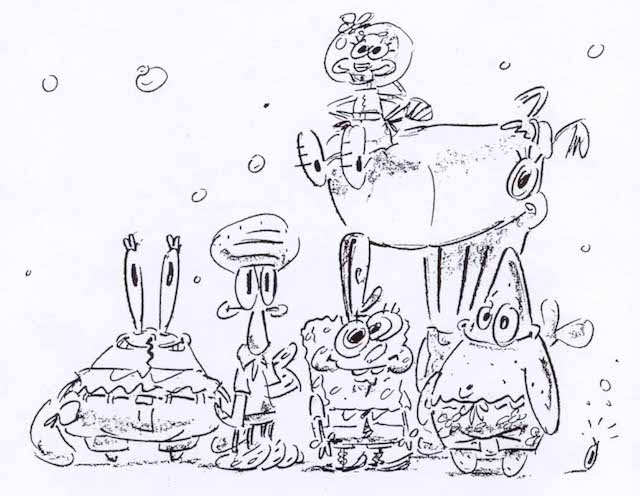
[Stephen Hillenburg]
On the show’s surprising success, Hillenburg remarked via Biography Today:
“I never imagined that it would get to this point. When you set out to do a show about a sponge, you can’t anticipate this kind of craze. We just try to make ourselves laugh, then ask if it’s appropriate for children. I can tell you that we hoped it would be liked by adults. But we really thought the best we could hope for was a college audience.”
After three seasons, the show’s production was suspended to make room for Hillenburg’s magnum opus: a theatrical animated movie starring the loveable yellow sponge. This came in the form of The SpongeBob SquarePants Movie, in which he served as director, co-producer, and one of the writers. SpongeBob and Patrick’s epic quest to retrieve King Neptune’s crown was released in North America via Paramount Pictures on November 19, 2004, to positive reviews and a worldwide gross of $140 million.
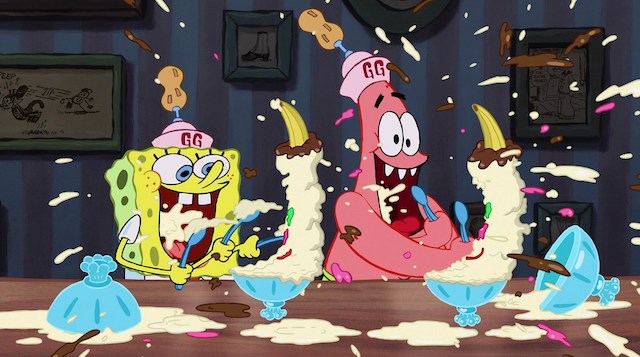
[Paramount Pictures]
However, Hillenburg was reported to be fully returning to the show in 2014. He would then serve as a story writer and executive producer for the franchise’s second film The SpongeBob Movie: Sponge Out of Water, which Tibbitt directed, and the 2015 entry became another critical and commercial success. Sadly, Hillenburg was diagnosed with ALS two years later, though he remained committed to helping out with the show despite his disease.
In his final year of living in 2018, he received the Winsor McCay Award at the 45th Annie Awards, the top award that honours an individual’s lifetime achievements and accomplishments in the field of animation. Later that year during the 45th Daytime Emmy Awards, he was given special recognition for “his contribution and impact made in the animation field and within the broadcast industry.” Both of these were presented to him by SpongeBob’s voice actor Tom Kenny.
The voice of #SpongeBob @RealTomKenny pays tribute to @SpongeBob creator Stephen Hillenburg at the #DaytimeEmmys #CreativeArtsEmmys pic.twitter.com/OJ0QR774Ze
— Daytime Emmy Awards (@DaytimeEmmys) April 28, 2018
Stephen Hillenburg was truly a bold creative genius, showing how multiple interests and different career pathways would fuse together to create some really special, charming, and indeed very quotable. From his humble beginnings as a biology teacher to the top of his game with a hugely successful cartoon series, Hillenburg was the one responsible for making a child-like sponge and his friends into global icons. His groundbreaking franchise has been cemented into childhoods, popular culture, internet culture, and beyond, one where it’s universal appeal and impact should be guaranteed to last for generations to come.
And finally, we shall conclude with a short, yet touching farewell video which was edited by YouTuber Chris Patstone.


